Know Your Lore: Overwatch 2017 story in review
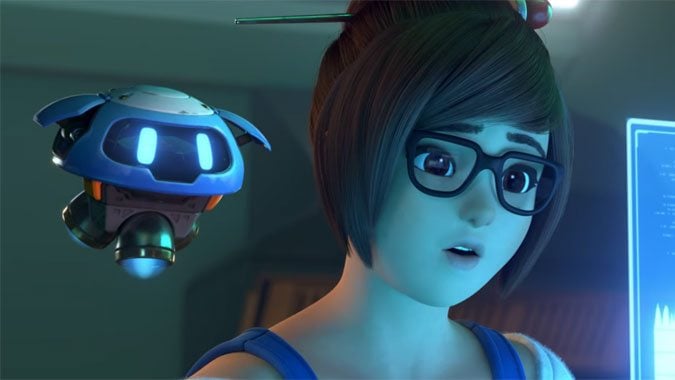
Overwatch debuted in 2016 as a captivating and fun shooter — but what caught the imaginations of players and non-players alike was the colorful cast of characters it introduced. The story of Overwatch is told through character bios, bits of fictional news posts on the main site, comics, and animated shorts. Between it all, the story shines through — not complete by any means, but the framework of an utterly fascinating world.
Why is that story so fascinating? Part of it is the concept behind the IP. The idea of a world in peril, saved by heroes that subsequently fall from grace, is pretty interesting. Global conspiracies and sly machinations by organizations add another layer to the tale.
I think a good chunk of why Overwatch’s story is so appealing is that it’s being given to us in such an unconventional way. We don’t have a story to play through in-game — we get it in pieces, through various means. More importantly, it’s left up to the reader to pull it all together. That adds a layer of interactivity that isn’t necessarily present in other IPs. It allows both players and non-players another way to enjoy the game that isn’t just jumping into a match and whalloping the other team.
But how did that ongoing narrative, that fascinating puzzle hold up in 2017? Let’s take a look.

The story so far
At some point in the not-too-distant future, Earth came into peril when a series of multiple omniums around the world suddenly reactivated and began mass-producing omnic war machines. This conflict — the Omnic Crisis — threatened to end humanity altogether. In response to the Crisis, the United Nations formed a strike team of heroes from around the world, dubbing it Overwatch. Eventually, Overwatch was able to successfully end the conflict and earn the goodwill and adoration of humanity as a result.
But it wouldn’t last. Overwatch dubbed itself as a peacekeeping organization focused on scientific development and keeping threats at bay. However, rumors began to swirl — how good of an idea was it to have a team of people so powerful? Was what they were doing even ethical or legal? Additional rumors of internal strife between team members fueled the flames of discontent. And those rumors quickly turned to accusations, sparking an outright investigation into the group.
All the strife came to a head in an explosive confrontation between Commander Jack Morrison and Blackwatch leader Gabriel Reyes at Overwatch’s Swiss Headquarters. In the aftermath of the explosion, neither Reyes nor Morrison’s bodies were found. But their deaths signaled the death knell of Overwatch. The organization was officially disbanded shortly after. The United Nations introduced the Petras Act, barring all former Overwatch agents from continuing operations.
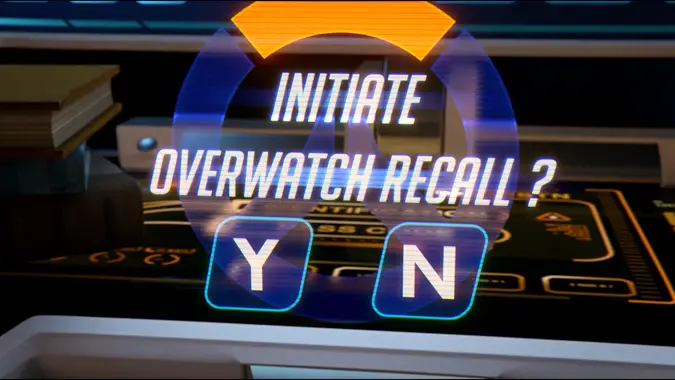
Recall
Years later, one Overwatch agent — Winston — sat in the old Watchpoint: Gibraltar facility. For years, he’d been keeping busy with new inventions and research — and also keeping an eye on the continual decline of the world. When the Watchpoint came under attack by Talon agents, Winston decided enough was enough. In clear defiance of the Petras Act, Winston sent a recall signal to all remaining Overwatch agents, a plea calling them back to active duty.
Some responded immediately, like Tracer. Others lingered in the shadows. And still others — like the long “dead” Morrison, and his “dead” second-in-command Ana Amari, worked alone, seeking justice in their own ways. New heroes and characters of interest began to pop up over the following year. Widowmaker assassinated Tekhartha Mondatta, Junkrat and Roadhog began an international crime spree. A forgotten Overwatch scientist named Mei emerged from cryostasis in Antarctica, and set out to rejoin the world.
And a particularly clever hacker uncovered evidence of a global conspiracy. After going into hiding, she took the name Sombra and began trying to unravel the truth behind that conspiracy. While working for Talon, Sombra wormed her way into Volskaya Industries and struck a curious deal with its CEO, Katya Volskaya. 2016 ended with a comic called Reflections, containing snapshots of heroes and villains alike as they reflected upon their past and celebrated the holidays.
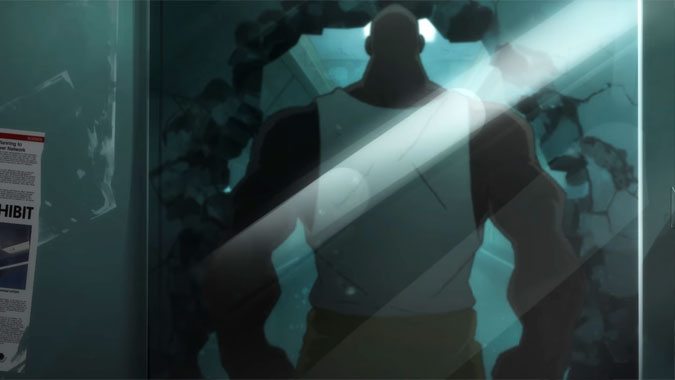
2017
That was a lot of material for one year — but it was necessary to set the framework of the world. 2017 continued that narrative, introducing two brand-new faces and one very familiar name: Doomfist. Captured and imprisoned during Overwatch’s heyday, Doomfist was simply biding his time in prison. Eventually, whatever events he incited played out, and he easily escaped.
Talon got a lot more information this year, both by virtue of Doomfist’s return, and the introduction of Overwatch’s newest hero, Moira. A dangerous geneticist, at one point Moira was a part of Overwatch’s Blackwatch division. Moira was left to her own devices after Overwatch’s disbandment. Seeking funding, she accepted an invitation to join a team of scientists in Oasis. It also led her to Talon…who had been quietly supporting her for years, in exchange for the results of her experiments and developments.
Doomfist didn’t escape from prison undetected. In fact, he made a terrifying entrance in Numbani, where he utterly destroyed a new line of defense robots and recovered his namesake weapon. In response, a young genius named Efi Oladele used the parts from the dispatched OR15s and built a new hero from scratch. The omnic, dubbed Orisa, was meant to guard and protect Numbani from any additional threats.
Those threats didn’t really come — Doomfist had what he wanted from Numbani. Gauntlet safely in his possession, he returned to Talon and took his place as leader of its inner council. In other parts of the world, Katya Volskaya asked Zarya to hunt down information on Sombra. The resultant chase led her around the world and into a direct confrontation with the hacker.
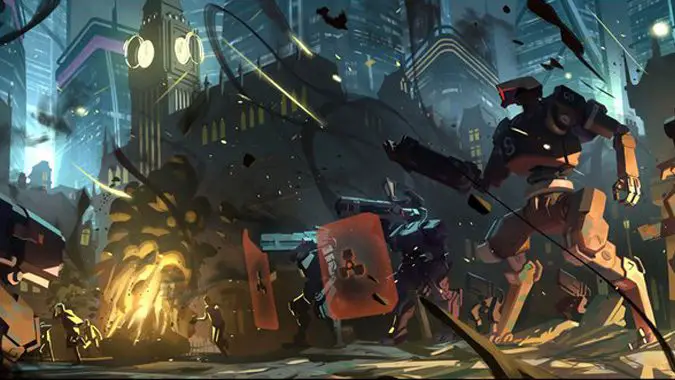
Ongoing narrative
In comparison to 2016, last year really didn’t hold nearly as much story development. On the one hand, this is understandable — 2016 was essentially establishing an entire narrative. In 2017, it became a matter of what Blizzard wanted to do with that narrative. Some of the year was spent delving into Overwatch’s past, like the Uprising event that highlighted a key piece of Overwatch’s history. Some of it was spent investigating present day. The Zarya comic Searching took place directly after the Sombra animated short from BlizzCon 2016.
Realistically, this makes sense. When a game first comes out, of course you’re going to get a lot of story for it. Each of Overwatch’s initial heroes had their own backstory to tell. The history of the Overwatch organization was another tale in and of itself. And present day wasn’t so much highlighted, because all that backstory needed to be established. 2016 was an exercise in laying a tremendous amount of groundwork, a foundation for whatever story the Overwatch team wanted to tell.
Once that jam-packed debut was sorted out, Blizzard could begin to focus on the stories it wanted to tell with Overwatch. Unfortunately, 2017 pales in comparison to 2016, simply due to the sheer volume of lore we got from Overwatch’s debut year. It doesn’t mean that the lore we got was bad — all of the story threads introduced in 2017 were suitably fascinating. It just means that it feels a little bit like we didn’t get enough of it.
2016 was busy setting up the foundation for a story. 2017 was essentially the first steps into bringing that story forward.
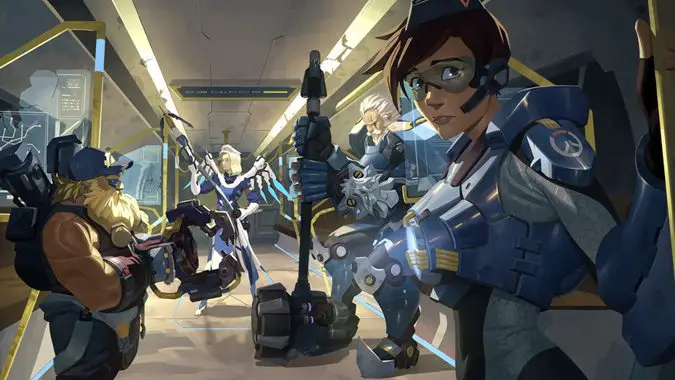
Where to now?
2016 gave us six animated shorts, 2017 gave us two. 2016 gave us ten comics, nine of which were lore-relevant. 2017 gave us seven, only five of which were lore-relevant. The question isn’t whether or not 2017 was bad for Overwatch story — it wasn’t. It’s where Overwatch is going to go from here. What kind of narrative pacing are we looking at? How much time are they going to dedicate on a story that isn’t really tied to the playable game at all?
Overwatch isn’t an RPG or a story-heavy title, it’s a shooter. But the narrative Blizzard has built around that shooter is so intriguing that players are desperate to see more of it. Honestly, just based on fan response Blizzard has managed to capture lightning in a bottle with Overwatch. The fan community has embraced these characters with fierce, unrelenting devotion. Is Blizzard going to continue delivering this story in small steps, or are they going to give us more?
We don’t really know. Overwatch is headed into year three, and in some ways the title is still establishing itself. Personally, I’m hoping we see more out of Overwatch this year in terms of story. I’d love to see more comics, or even a novel for that matter. More animated shorts, more tales that take place in present day and bring all these disparate heroes together.
There’s a tremendous opportunity here to take Overwatch to a place somewhere beyond simple shooter. The game has an audience outside of shooter fans — people that want to hear and see more out of Overwatch’s story, even if they aren’t necessarily playing the game. It’s something Blizzard could easily take advantage of, if they’re interested. For now, we wait and see what they decide they do with the title in 2018.
Please consider supporting our Patreon!
Join the Discussion
Blizzard Watch is a safe space for all readers. By leaving comments on this site you agree to follow our commenting and community guidelines.
 @Shadesogrey
@Shadesogrey



